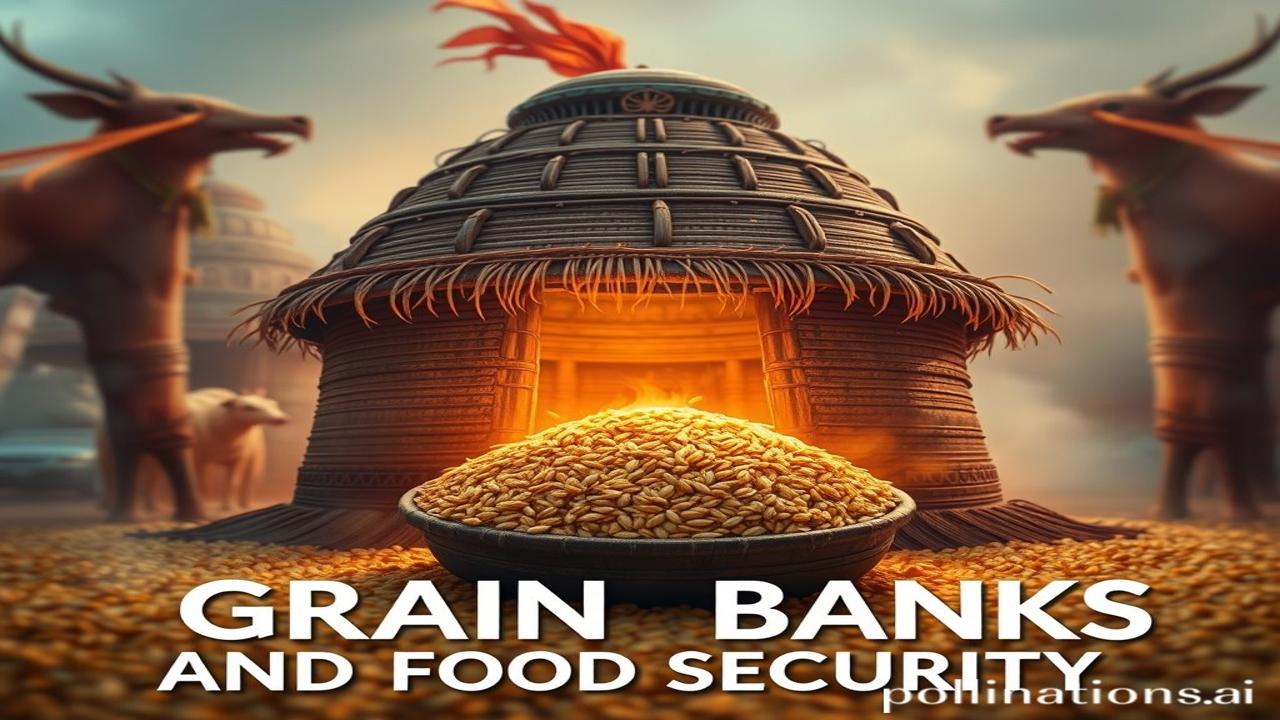Kabhi Suna Hai Annapurna Ki Dastaan Gaon Mein? Community Grain Banks and Food Security ki Kahani
Kabhi socha hai, jab monsoon fail ho jaata tha, jab kheti sookh jaati thi, tab gaon waale kaise jeevit rehte the? Imagine, the parched earth, the empty stomachs, and the fear in everyone’s eyes. Lekin, dhool mein dabi ek ummeed ki kiran thi – Annapurna ki dastaan, community grain banks ki kahani. This wasn’t just about survival; it was about community, resilience, and the deep-rooted Bharatiyata that has always helped us overcome adversity.
Itihaas Ki Galiyon Mein: Community Grain Banks Kya Hai?
Community grain banks, simple shabdon mein, aisi vyavastha thi jahan gaon ke log milkar anaj jama karte the. Think of it as a communal ‘kitty’ but for food! Yeh concept koi naya nahi hai. History tells us that the idea goes back centuries, with roots in various parts of India. Specifically, humein pata chalta hai ki these systems flourished during periods of droughts or famines, especially in remote rural areas.
The earliest documented examples are hard to pinpoint with exact dates, but you can find traces of similar practices from the Mauryan empire onwards. Local communities in states like Odisha, Maharashtra, and West Bengal were particularly active in establishing and maintaining these banks. Why were they so important? Because they provided a safety net, a buffer against starvation, especially for the marginalized sections of society. Socho, ek family jiske paas kuch nahi hai, woh jaanti hai ki grain bank se unhe madad milegi. That peace of mind, that sense of security, was invaluable.
Zameeni Sach: Kisan, Bhookh, Aur Annapurna Ka Aashirwad
Let’s go back in time. Picture this: Gaon ka sarpanch, apne safed vastra mein, anaj ke bhandar ke samne khada hai. Ma Rukmini, ek kisan mahila, apni jholi mein anaj lekar aati hai. “Sarpanch ji, is baar fasal kam hui hai, lekin mein apne hisse ka anaj bhandar mein jama karungi.”
This wasn’t just a transaction; it was a ritual, a sacred duty. The community grain bank wasn’t just a building; it was the heart of the village. It represented solidarity, shared responsibility, and the belief in Vasudhaiva Kutumbakam – the world is one family.
Aur jab samay kathin aata tha, when the rains failed, and the fields withered, the sarpanch would distribute the grain to those in need. The rich and the poor, the upper castes and the lower castes, everyone received their share. It was a system built on trust and reciprocity. Imagine the smiles on the faces of children when they received their first meal after days of hunger. That’s the power of community.
Dharohar Aur Pehchan: Aaj Ke Bharat Mein Community Grain Banks
Today, in modern India, the traditional model of community grain banks has evolved, but the spirit remains. We see echoes of it in government-sponsored food security programs, in self-help groups, and in the collective action of rural communities.
The Public Distribution System (PDS) is, in many ways, a modern manifestation of the ancient grain bank concept. While the PDS is often criticized, its underlying aim is the same – to ensure food security for all. Similarly, many NGOs and community-based organizations are reviving the concept of community grain banks, tailoring them to meet the specific needs of local communities. They are not just about providing food; they are about empowering communities to manage their own resources and build resilience against climate change and economic shocks. This reflects the enduring Bharatiya spirit of self-reliance and community-led development.
Mazedar Tathya: Food Security Sirf Anaj Nahi Hai!
Log samajhte hain ki food security ka matlab sirf anaj jama karna hai, lekin asli sach yeh hai ki food security mein nutrition, access, and sustainability bhi shamil hain! Community grain banks, in their original form, understood this intuitively. They encouraged the cultivation of diverse crops, promoted traditional farming practices, and ensured that everyone had access to a balanced diet. It wasn’t just about preventing starvation; it was about promoting health and well-being.
Drishya Aur Bhavnaen: Gaon Ki Mitti Ki Khushboo
Close your eyes. Smell the earth after the first monsoon shower. Feel the rough texture of the jute sacks filled with grain. Hear the rhythmic beat of the dhol during the harvest festival. Taste the sweetness of jaggery offered as prasad after the grain collection ceremony. These are the sensory experiences that connect us to our past, that remind us of the importance of community and shared responsibility. The air was filled with the smell of freshly harvested grains mixed with the smoke from the evening fires. The temple bells echoed through the valley, a constant reminder of the blessings of Annapurna.
Antim Vichar: Shakti Samuh Mein Hai
The story of community grain banks is a story of resilience, of hope, and of the enduring power of community. It reminds us that even in the face of adversity, we can overcome challenges by working together, by sharing our resources, and by embracing the values of Vasudhaiva Kutumbakam.
“Annadanaat param daanam, na vidyate bhu mandale” – There is no greater charity than the donation of food in this world. Let us continue to honor this ancient wisdom and work towards ensuring food security for all.
